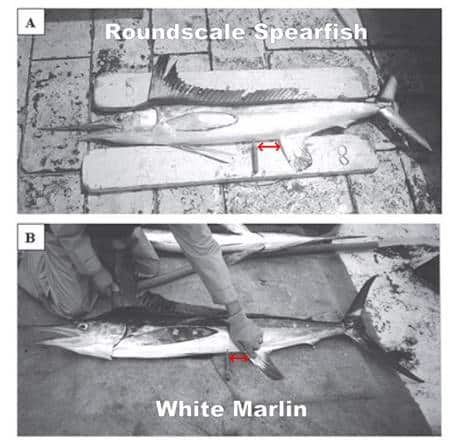
roundscale spearfish
Billfish anglers will no longer need to question whether the fish they just boated is a white marlin or the similar-looking and once-prohibited roundscale spearfish.
The Florida Fish and Wildlife Conservation Commission (FWC) voted Wednesday to allow harvest of the species in Florida state waters at its May 2-3 Commission meeting.
This change includes adding roundscale spearfish to the one-billfish bag and possession limit and the creation of a 66-inch minimum size limit when measured from the lower jaw to the fork of the tail.
Roundscale spearfish harvest has been prohibited in state waters since 1999 because the fish rarely comes into Florida waters. State waters are from shore to three miles in the Atlantic and from shore to nine miles in the Gulf. Federal waters begin where state waters end. But the fish is often confused with white marlin. Genetic testing of tournament entries along the Atlantic coast shows that about 19 percent of tournament-winning white marlin were actually roundscale spearfish.
Federal fishery managers allowed roundscale spearfish harvest in federal waters off the coast of Florida but considered roundscale spearfish to be the same species as white marlin. Recently, the NOAA Highly Migratory Species Division, the group that makes federal management plans for species such as roundscale spearfish, determined the fish was a separate species and began managing it as such.
These federal and state changes will increase the amount of data collected on roundscale spearfish, helping the FWC and NOAA better understand the species and its role in our waters.
Angling for billfish? The best way to tell the difference between a white marlin and a roundscale spearfish is to measure the distance between the front edge of the fish’s anal fin (located on the underside of the fish, near the tail) to the vent. As shown in the photograph below, the distance between the anal fin and the vent is longer on a roundscale spearfish than it is on a white marlin.
The scales in the middle of the fish’s body are also different on the two species, with the roundscale’s being coarser in texture than those of a white marlin.
—Source: FWC









